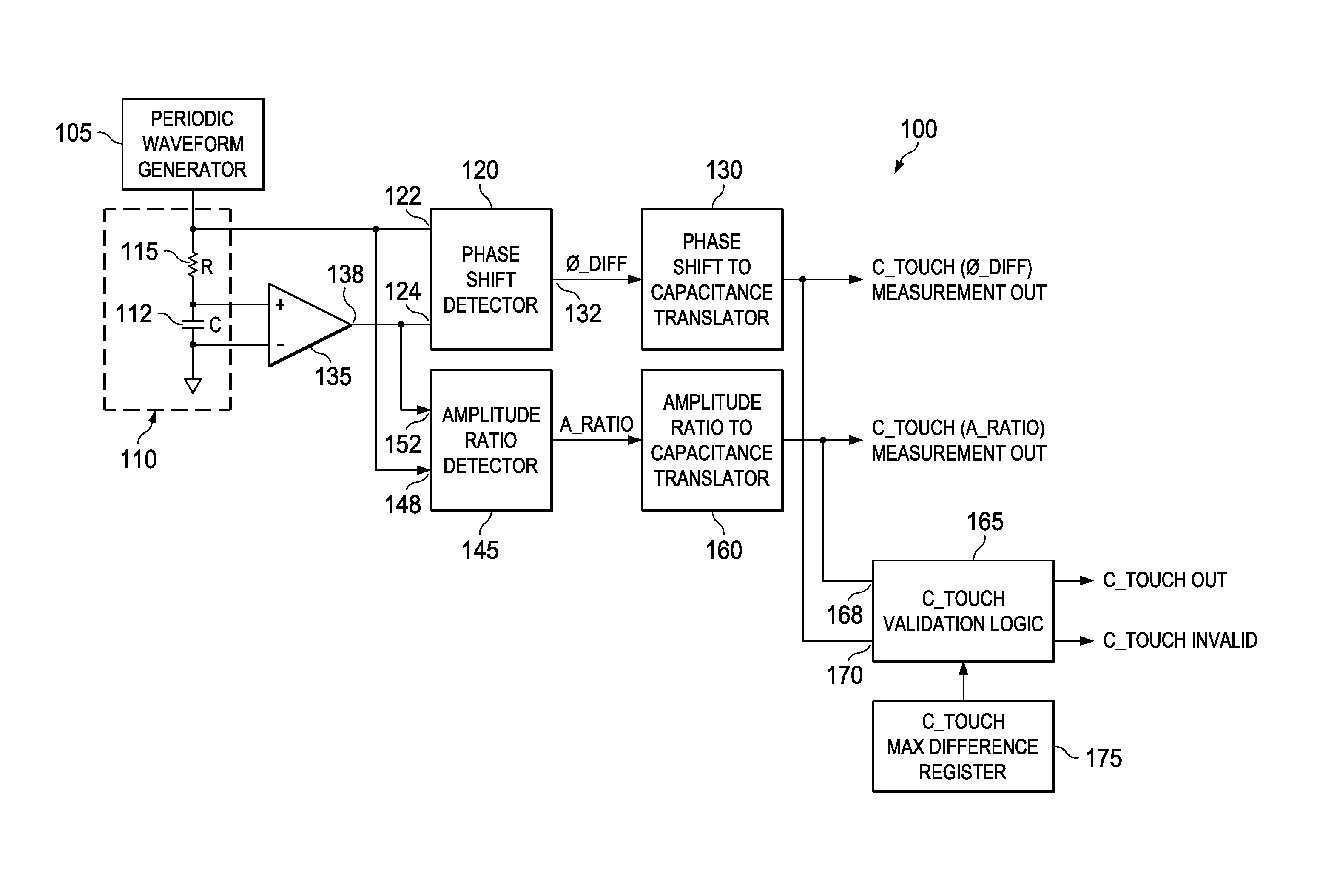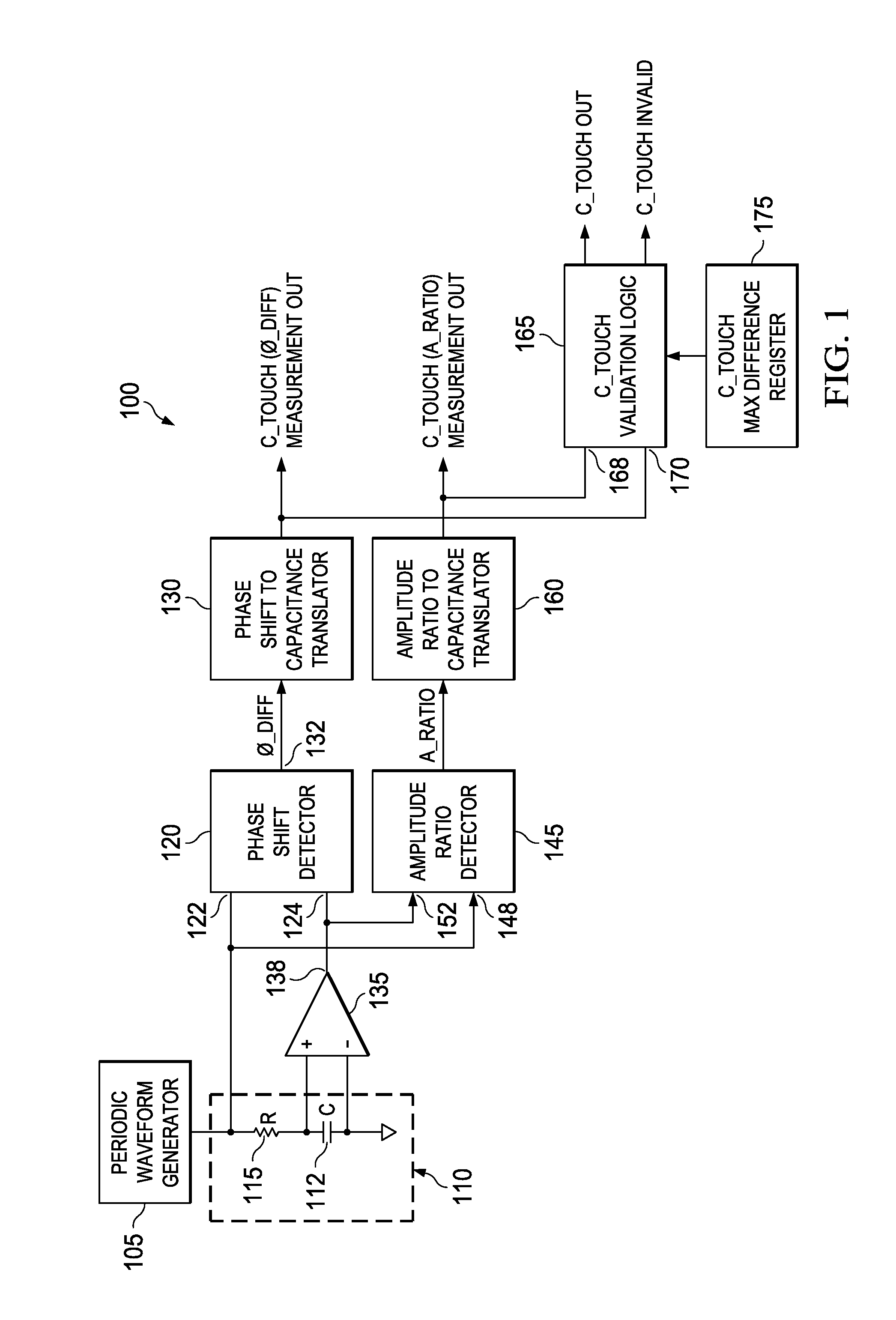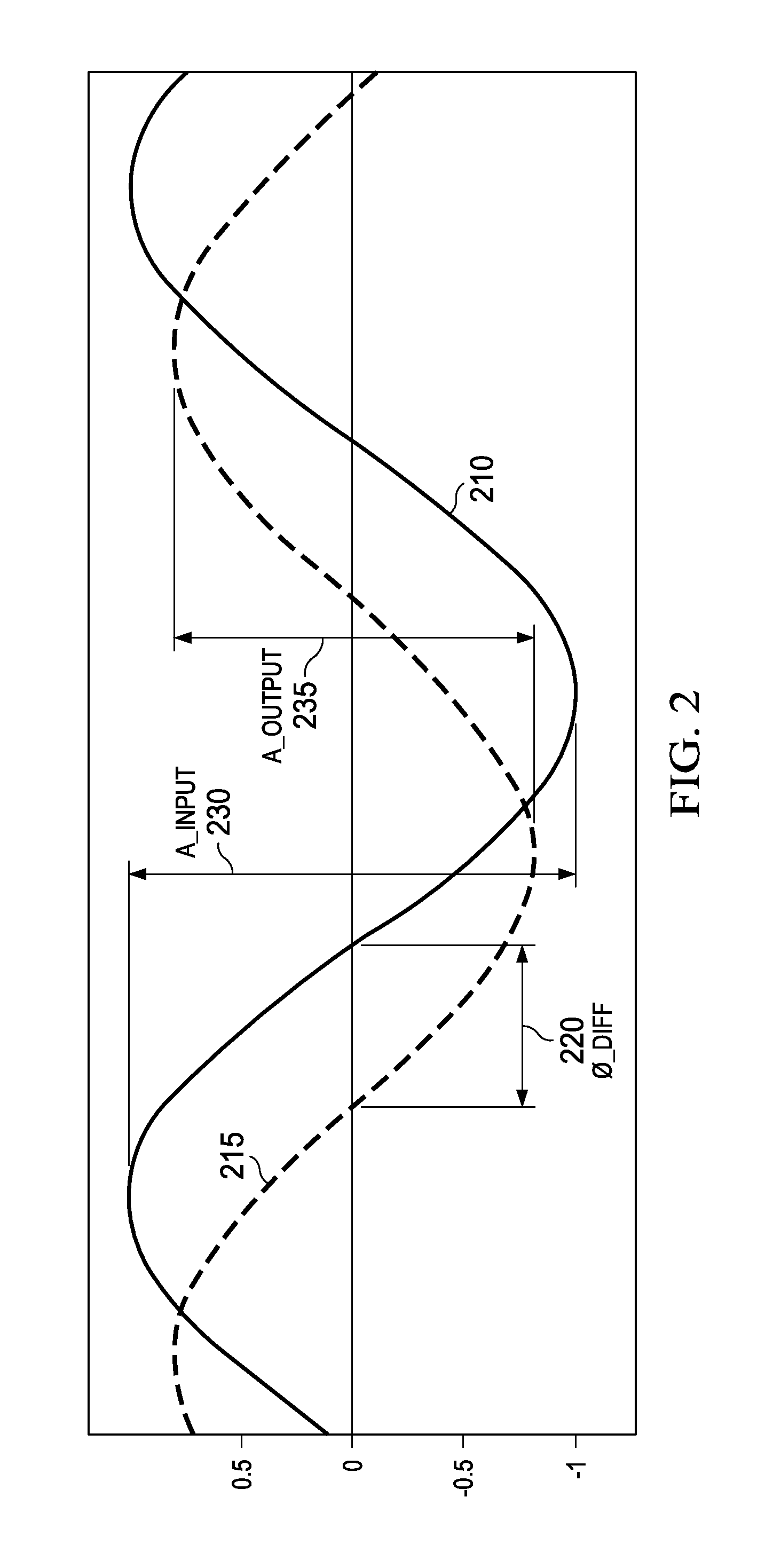Capacitive sensing apparatus and methods
- Summary
- Abstract
- Description
- Claims
- Application Information
AI Technical Summary
Benefits of technology
Problems solved by technology
Method used
Image
Examples
Embodiment Construction
[0017]FIG. 1 is a schematic diagram of a capacitive touch detection apparatus 100 according to various example embodiments of the invention. The apparatus 100 includes a periodic waveform generator 105 coupled across a series-connected resistive-capacitive (“RC”) network 110. The periodic waveform generator 105 generates a periodic voltage waveform of frequency F and imposes the periodic voltage waveform across the RC network 110. The periodic waveform generator 105 may generate a sine waveform, a triangular waveform, a square waveform or a pulse waveform among other waveform shapes.
[0018]The RC network 110 includes a capacitive touch element C 112 of variable capacitance C_TOUCH and a resistor R 115. Values of the capacitance parameter C_TOUCH are a function of a proximity of a dielectric mass to C 112, among other factors.
[0019]The detection apparatus 100 also includes a phase shift detector 120. A first input 122 of the phase shift detector 120 is coupled across the RC network 11...
PUM
 Login to View More
Login to View More Abstract
Description
Claims
Application Information
 Login to View More
Login to View More - R&D
- Intellectual Property
- Life Sciences
- Materials
- Tech Scout
- Unparalleled Data Quality
- Higher Quality Content
- 60% Fewer Hallucinations
Browse by: Latest US Patents, China's latest patents, Technical Efficacy Thesaurus, Application Domain, Technology Topic, Popular Technical Reports.
© 2025 PatSnap. All rights reserved.Legal|Privacy policy|Modern Slavery Act Transparency Statement|Sitemap|About US| Contact US: help@patsnap.com



